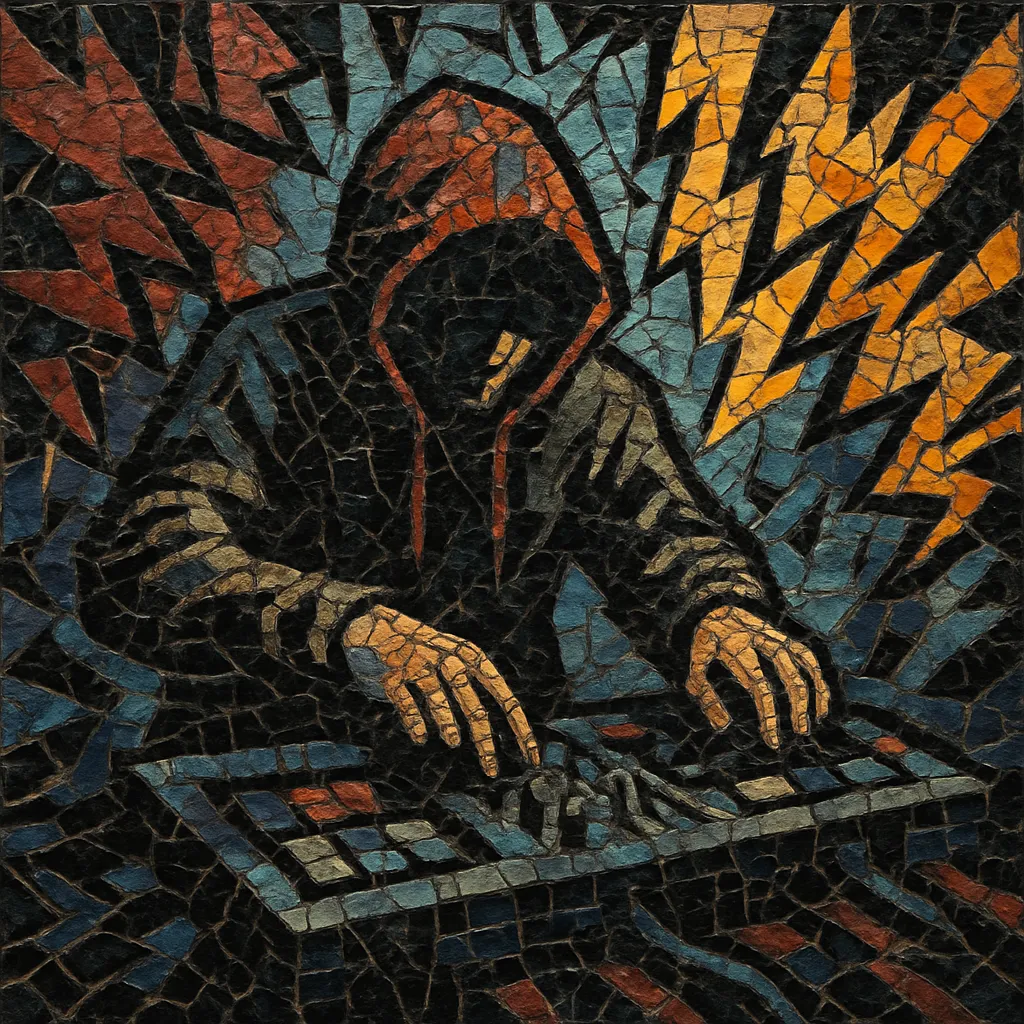Breakcore is a high-intensity electronic music genre built around hyper-edited breakbeats, extreme dynamics, and a deliberately transgressive, collage-like approach to sampling. It prioritizes rhythmic complexity, abrupt structural shifts, and heavy sound design over smooth continuity.
Typical tempos range from 160 to 220 BPM (and beyond), with the Amen break, Think break, and other classic breakbeats chopped into micro-fragments, re-sequenced, and processed with distortion, compression, and glitch edits. The palette freely fuses elements from jungle and drum and bass with gabber kicks, industrial noise, classical or choral snippets, ragga vocals, metal guitar samples, and odd-meter patterns.
More than a single “sound,” breakcore is a methodology: confrontational energy, maximalist editing, and anti-formalist structures that often subvert dance-music expectations. It thrives in DIY scenes, warehouse parties, and netlabel cultures, where forward-pushing experimentation and boundary-blurring sampling are central values.
Breakcore emerged in the mid-to-late 1990s as producers on the fringes of jungle, drum and bass, hardcore techno, and industrial music pushed breakbeat chopping to new extremes. DIY labels and events across continental Europe and the UK—alongside netlabels and bulletin boards—helped coalesce a shared ethos: brutally edited breakbeats, loud compression, harsh timbres, and irreverent sampling. Early figures and hubs included scenes in the Netherlands, Belgium, Germany, and the UK, with labels like Digital Hardcore Recordings, Praxis, Peace Off, and later Planet Mu and Tigerbeat6 amplifying the sound.
In the 2000s, breakcore developed a recognizable identity: rapid bpm, gabber-influenced kicks, and radical sample collage that could veer from ragga toastings to classical strings within a single track. Events such as Breakcore Gives Me Wood (Belgium) symbolized the movement’s DIY, transnational character. Artists like Venetian Snares, Bong-Ra, Enduser, Shitmat, and Doormouse refined different strands—some leaning toward classical melodicism and odd meters, others toward ragga-jungle hybrids or cartoonish, mashup-minded chaos. Online communities and file-sharing accelerated the genre’s mutation and reach.
While never fully mainstream, breakcore’s techniques permeated adjacent styles: deconstructed club, hardvapour, and a wave of internet-born microgenres explored similar maximalist edits, noise textures, and high-velocity rhythm. Artists like Igorrr bridged breakcore with baroque and metal, while newer producers fused anime, gaming, and hyperpop-adjacent aesthetics with breakcore’s cut-up sensibility. Periodic revival cycles—fueled by platforms like Bandcamp and Discord communities—continue to attract new listeners and producers, keeping the style’s renegade spirit alive.


